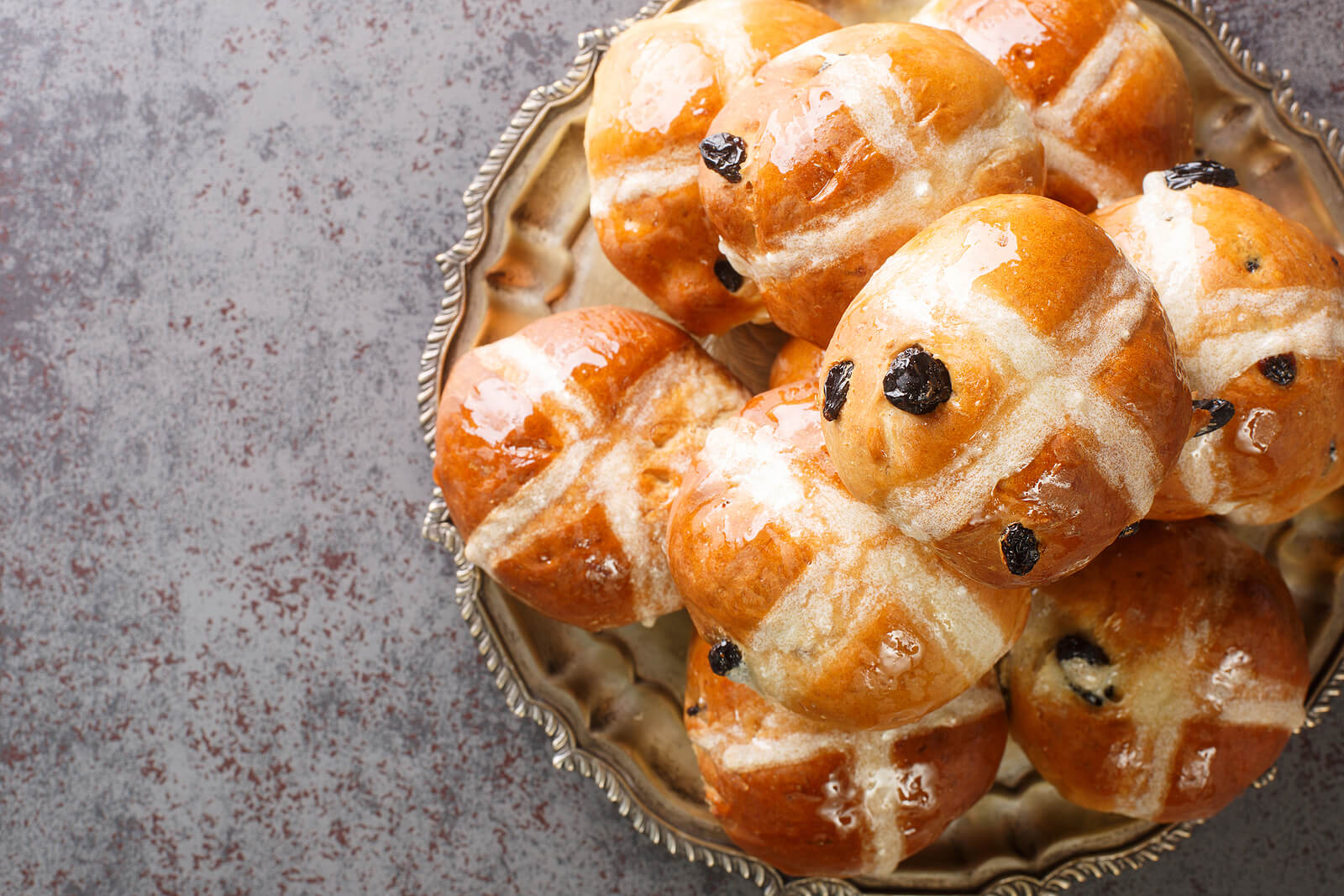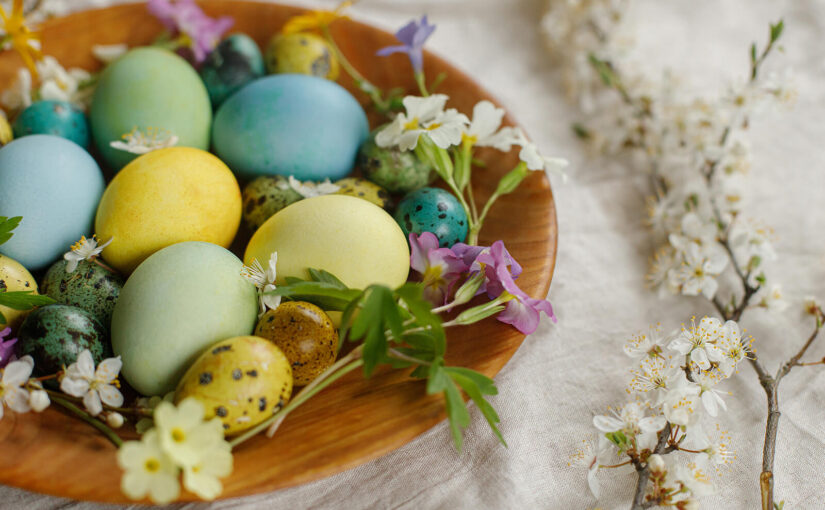Easter signals the end of Lent, a period of 40 days marked by fasting and self-discipline, and the arrival of the most important festival in the Christian calendar.
An estimated 44.5 million people in the UK will celebrate Easter this year, representing four in five Brits.
According to recent statistics, 77% of the population plans to spend money on Easter celebrations in 2024, with an anticipated average spend of £53 per person. Shopping lists typically include Easter cards, chocolate eggs, hot cross buns, succulent roast lamb, and spring-themed house decorations.
Unfortunately, spending often leads to waste, and it’s crucial to acknowledge the environmental footprint left by Easter traditions.
Get egg-cited for spring and join us as we explore some key aspects of the holiday and how to mitigate their environmental impact for a more sustainable Easter.
1. Easter eggs
In the UK alone, a staggering 80 million chocolate eggs are devoured annually, contributing significantly to packaging waste.
Let’s examine the impact of this packaging and explore the potential benefits of a more sustainable option.
Easter egg packaging waste
Traditionally wrapped in vibrant foil and encased in plastic trays inside oversized cardboard boxes, chocolate Easter eggs are often incredibly wasteful. However, there are steps we can take to reduce the impact.
Foil is easily recyclable. Scrunch it into a ball and deposit it in your recycling bin, checking in advance that your local council accepts it. Cardboard packaging can also be effortlessly recycled in your domestic recycling bin.
Identifying the plastic type for plastic components is essential, and it’s usually indicated on the packaging by a number inside a triangle of arrows. Dispose of it accordingly, either placing it in your household recycling bin, dropping it off at a designated collection point, or discarding it responsibly if it’s not recyclable.
Sustainable Easter eggs
Consider seeking non-chocolate eggs crafted from wood or metal as sustainable alternatives. These can serve as timeless Easter decorations to be gifted and reused year after year.
Alternatively, you could purchase large hollow metal eggs for your children, perfect for filling with eco-friendly gifts. This zero-waste Easter option promotes reuse and can become a new family tradition.
For those who prefer to uphold the chocolate custom, handmade chocolate eggs eliminate the issue of excess packaging and are a gift from the heart. These homemade delights are surprisingly easy to craft and can be personalised with unique patterns, colours, or names.
Sustainable Easter egg hunts
Simple changes can make a substantial difference to Easter egg hunts. Instead of the typical foil-covered chocolate eggs, consider alternatives like paper or cardboard eggs decorated by your children for indoor use. Use leftover crafting materials to minimise waste further.
Solid wooden eggs provide a sustainable solution for outdoor hunts. Children can get creative by painting these eggs before the search begins. Inexpensive options like decorative stones with temporary egg designs also offer a thrifty yet eco-conscious alternative.
Enhance the excitement using refillable wooden eggs stuffed with various packaging-free treats — you could even fill them with hunt clues for older children. While initially more costly than chocolate eggs, the investment pays off in the long run, offering endless opportunities for reuse and creative fun.
2. Easter food

Easter isn’t just about eggs — it’s also a time for indulging in timeless culinary delights like hot cross buns, simnel cake, and a hearty roast dinner featuring lamb or ham.
Why not elevate your Easter experience by baking hot cross buns and simnel cake instead of buying them? This allows you to savour these treats without contributing to packaging waste, and the homemade touch adds an extra layer of satisfaction. Store them in an airtight container to keep them fresh throughout the Easter festivities.
With your roast dinner, make a conscious effort to support local producers by sourcing your meat and vegetables from nearby farm shops. Choose seasonal produce and items free from plastic packaging. Don’t forget to take your reusable shopping bag with you.
For those looking to reduce their carbon footprint further, consider incorporating meat-free options into your Easter menu. You’ll lessen your environmental impact by omitting meat and open a world of delicious plant-based alternatives to explore.
3. Easter cards
While not as popular as Christmas cards, Easter cards remain well-liked and are often decorated with seasonal images like bunnies, chicks, lambs, and beautiful spring flowers. In 2022, the UK expressed its fondness for these seasonal greetings by spending over £8 million on individual Easter cards — excluding multipack purchases.
Consider transitioning to e-cards or sending a heartfelt message via email, text, or social media. These tech-savvy alternatives offer an eco-friendly option for staying connected during the festive season.
If you prefer physical cards, prioritise those crafted from recycled paper, free from embellishments like glitter and ribbon, and not packaged in plastic bags. Alternatively, unleash your creativity by making your Easter cards using leftover crafting materials.
When receiving Easter well wishes, remember to recycle cards responsibly, removing any non-recyclable elements to guarantee recycling.
By adopting these sustainable practices around Easter cards, you can celebrate while preserving the planet for future generations.
4. Easter decorations
The array of cheap yet adorable Easter decorations lining the shelves of shops may be tempting, but many of these items are poorly constructed and prone to breakage. They ultimately end up in the bin and are then sent to a landfill.
If you’re keen to decorate your home for Easter, it’s wise to adopt a long-term perspective when selecting decorations. For instance, choose washable napkins instead of single-use serviettes and favour durable wooden or fabric decorative pieces over flimsy paper alternatives.
Include natural elements in your décor wherever possible — they’re free and can be composted afterwards. You could use a tree branch to hang colourful eggs or fashion a door wreath from a reusable metal frame adorned with natural garden materials.
Perfect your Easter table setting by adding a vibrant floral touch with scattered fresh flowers or bunches displayed in vases.
Encourage your children to use household waste when engaging in craft activities. They could repurpose cracked eggshells by painting and displaying them or transform toilet roll tubes into charming Easter bunnies by adding feet and ears.
Let’s embrace sustainability this Easter and reimagine our traditions for a brighter, more environmentally conscious celebration.
